Swarthmore College Tour of the Galapagos Islands
With Marine Biologist Rachel Merz
October 2014
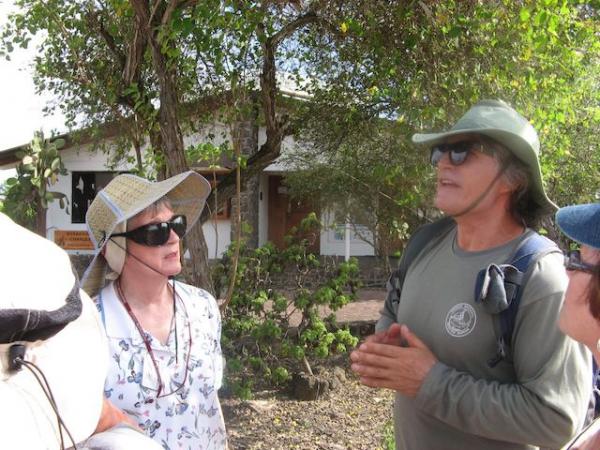
Getting started on the first day. The Estacion Cientifica Charles
Darwin is in the background. At first, all is strange, but we had a
series of great guides who explained what we were seeing, starting
with Hernan on the right. The observations that Charles Darwin made of
the diversity of wildlife on the different islands played a key role
in his theory of evolution. You are not permitted to tour the wildlife
sights unless accompanied by a certified guide. The Ecuadorans work
very hard to maintain the pristine sites and heal the damage done by
previous visitors going back to the whaling ships in the nineteenth
century.
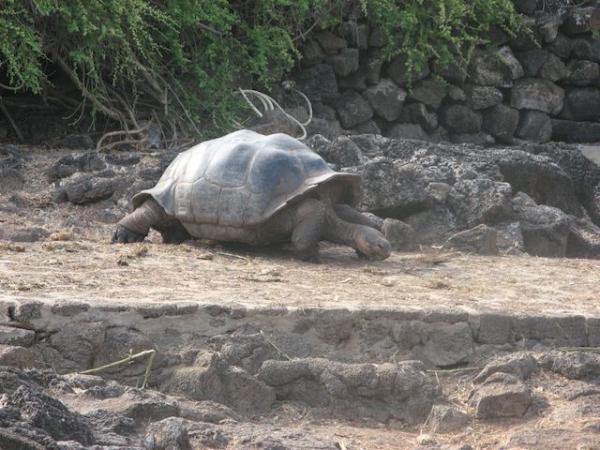
Our first view of the giant tortoises.
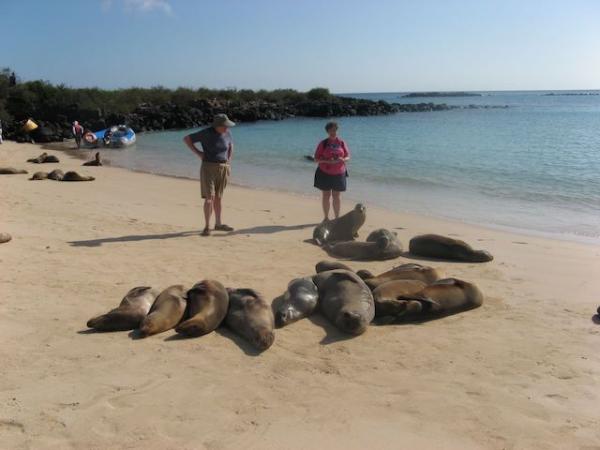
We saw Sea Lions everywhere, sunning themselves on beaches and rocky
cliffs, and in the water. They are utterly unafraid of humans. On land
they move very awkwardly on their flippers, but they climb high rocky
cliffs, and it seems there is no place they cannot go. In the water
they are very agile and can accelerate like a torpedo.
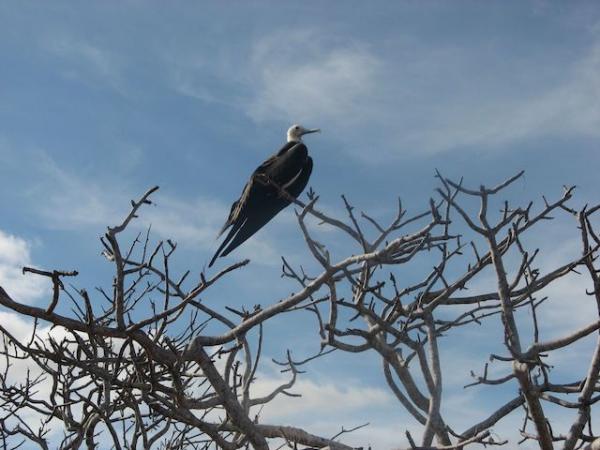
The most impressive bird that we saw was the Frigate. There are two
varieties, the Great Frigate and Magnificent Frigate.w This is a
juvinile Magnificent Frigate. Frigates, we were told are so named for
their piracy of the catches of other birds. They are fantastic fliers,
with a wing span of 6-7 feet, yet weighing just a little over three
pounds.
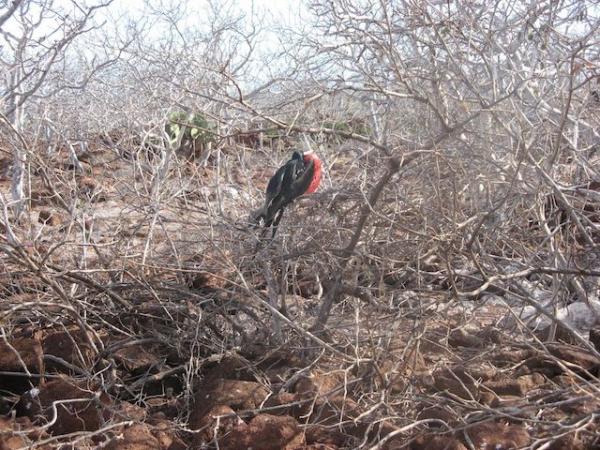
Adult male Frigate. The males have red pouches on their chests, that
they inflate to show females what fine fellows they are.
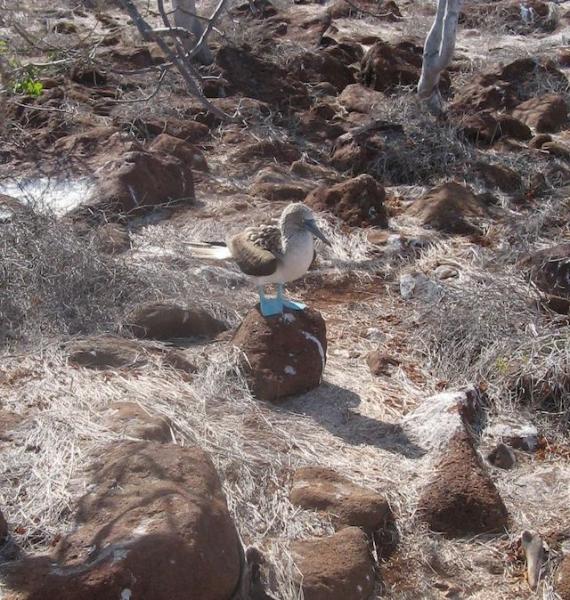
The signature bird of the Galapagos Islands is the Blue-Footed
Booby. This was our first sighting. The males do a little dance to
attract females, and the female sometimes joins in. Although it
doesn't show up here, their bills are blue also.
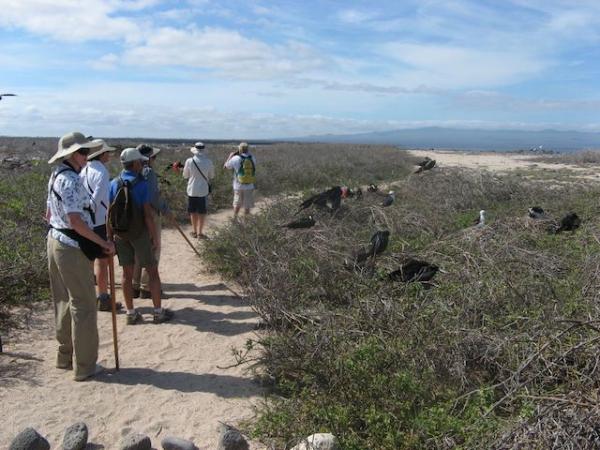
This is probably the most remarkable site that we visited. The
Frigates nest in colonies, and the path here runs right through one of
their nesting sights. The birds are unafraid of humans and did not
stir when we walked through. It was like being in an aviary, but with
no cages.
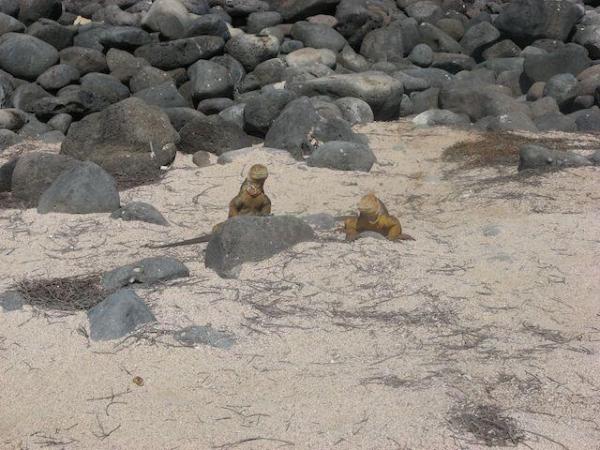
A pair of land Iguanas. We saw many and had to watch that we did not
step on one.
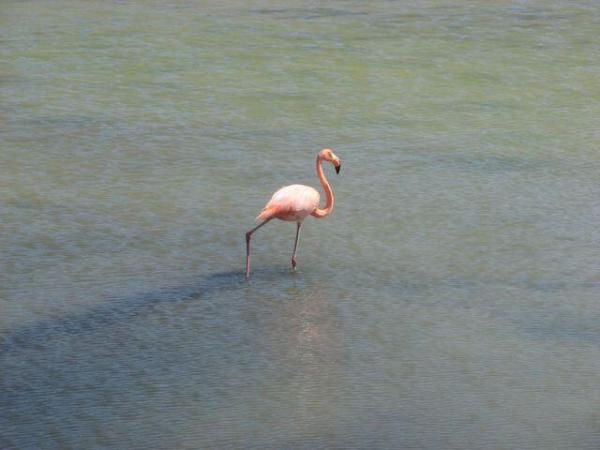
One of the islands we visited had a few flamingos.
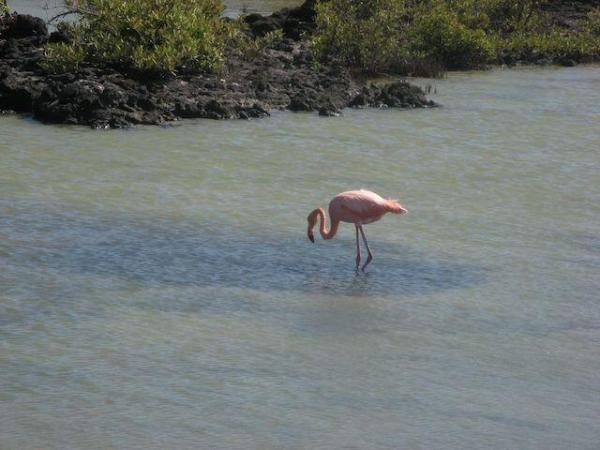
Foraging for food on the lake bed.
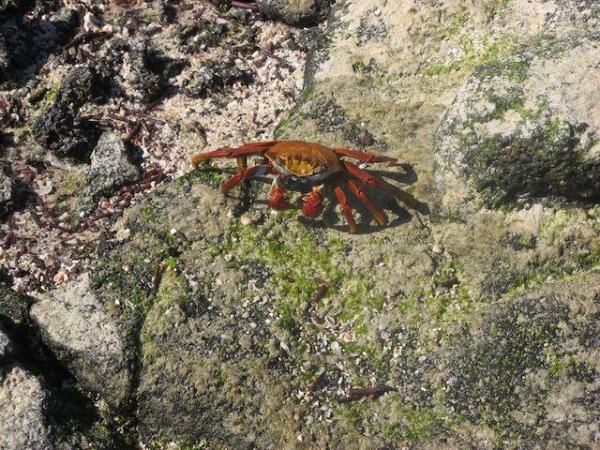
Sally Lightfoot crab, named after an exotic South American
dancer. They are all over the rock banks of the islands.
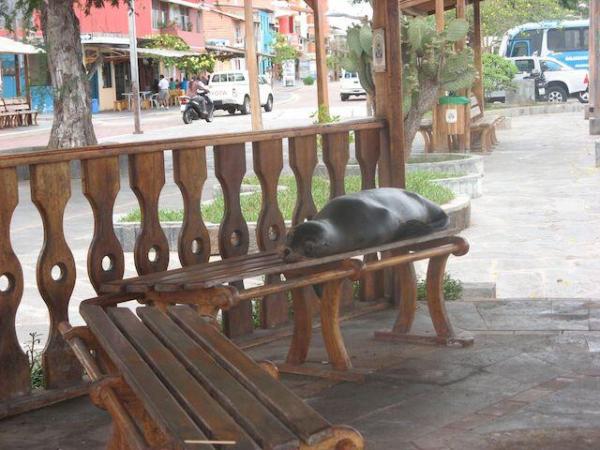
The Sea Lions own the islands. They are everywhere. This photo is in
one of the two ports that we visited. There are barriers to keep the
Sea Lions from coming into the town, but several times we witnessed
them defeating the barriers and going just wherever they wanted to go.
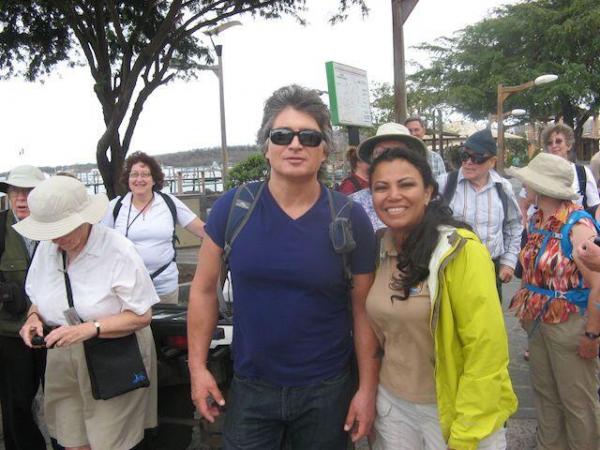
Hernan was very popular with the ladies on our tour. Jessica, on the
right, was another one of our guides.
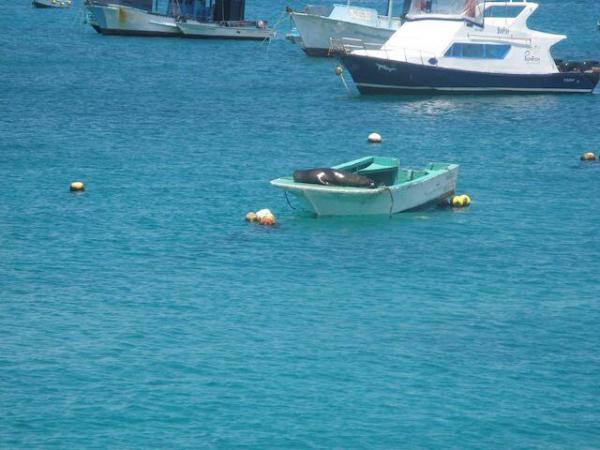
We watched this Sea Lion pop up from the water, climb onto the boat
and sun himself.
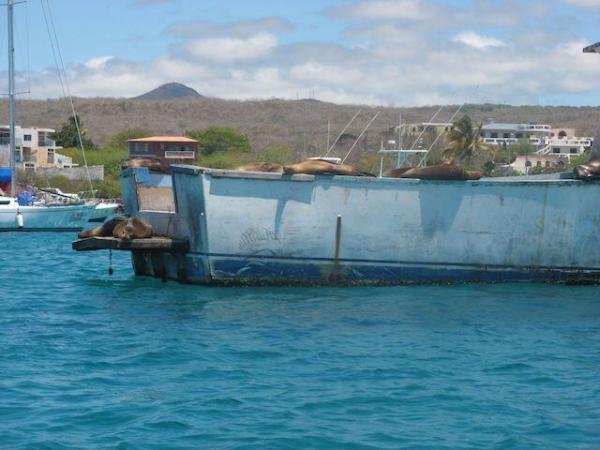
Sea Lion Navy.
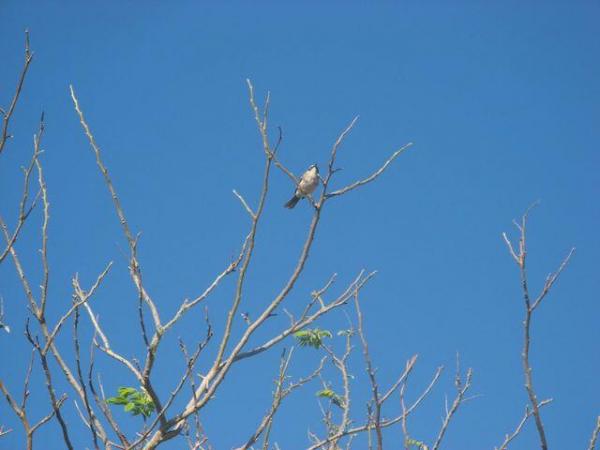
Galapagos Mocking Bird.
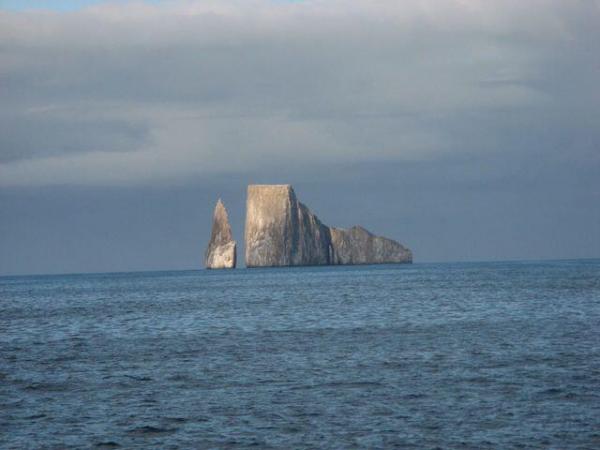
Striking view from our boat one morning.
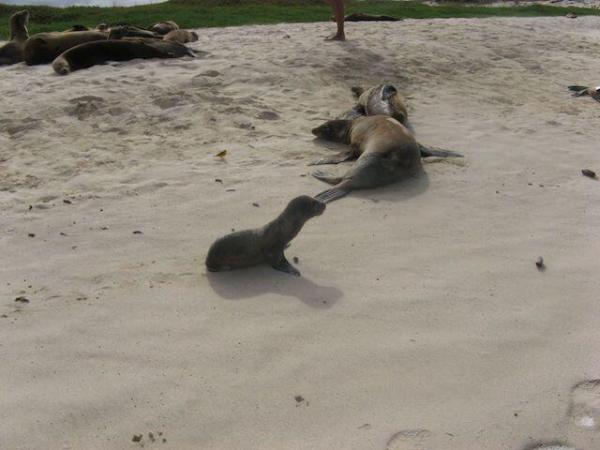
Baby Sea Lion.
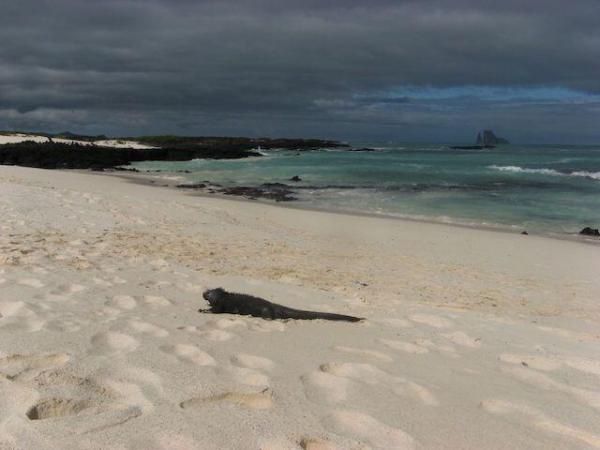
Marine Iguana. They divide their time between shore and the ocean.
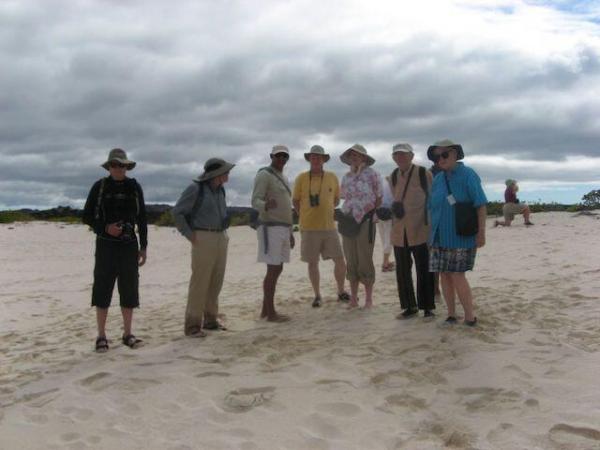
Third from the left is Rafael, another excellent guide. Third from the
right is Ginger.
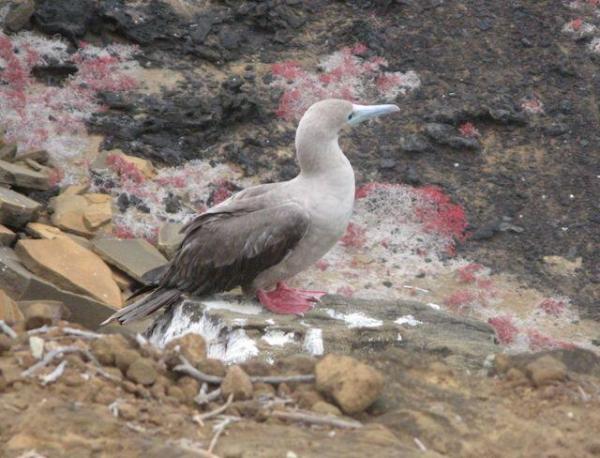
Red-Footed Booby. They have blue bills also.
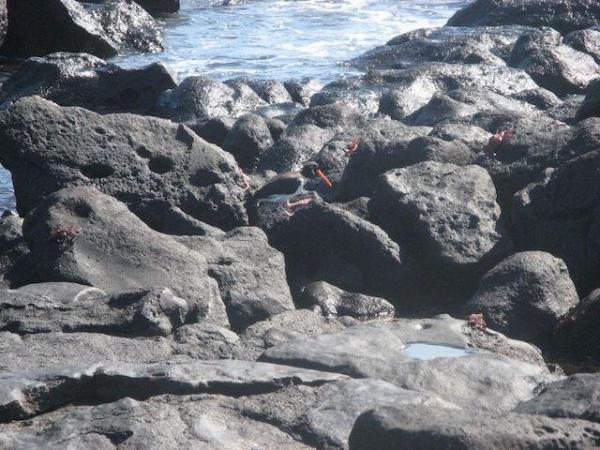
American Oyster Catcher. We saw these birds a couple times.
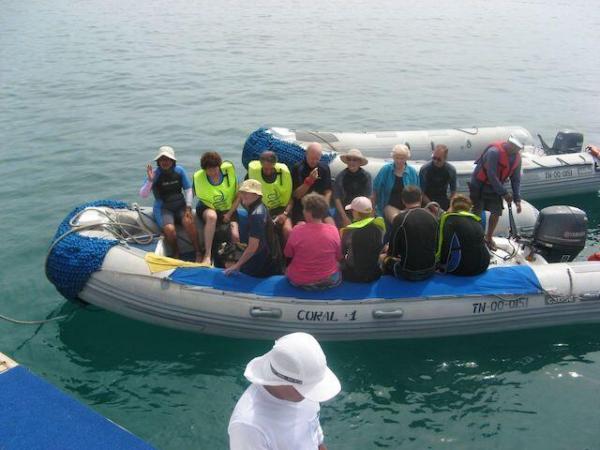
We ate and slept on our ship, the Coral I, and went back and forth by
these inflatable crafts called Zodiacs. This intrepid group is setting
out for deep-water snorkeling. Ginger is far left on the near side,
trying to smile at the photographer.
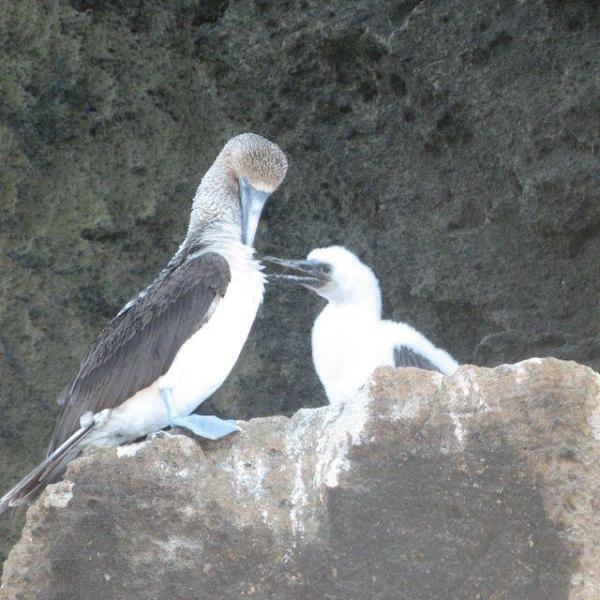
Blue-Footed Booby and chick.
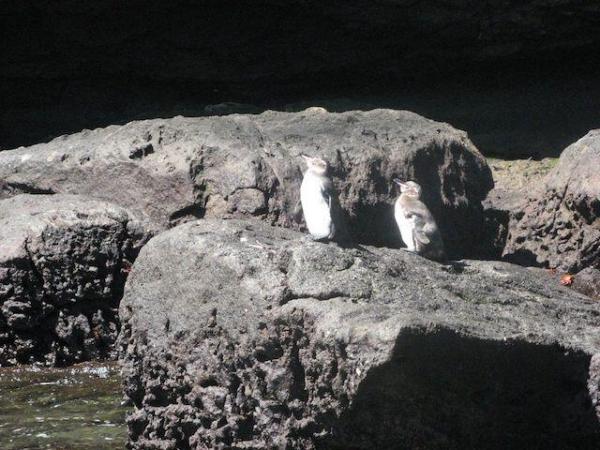
Pair of Galapagos Penguins. They are not as large as other penguins.
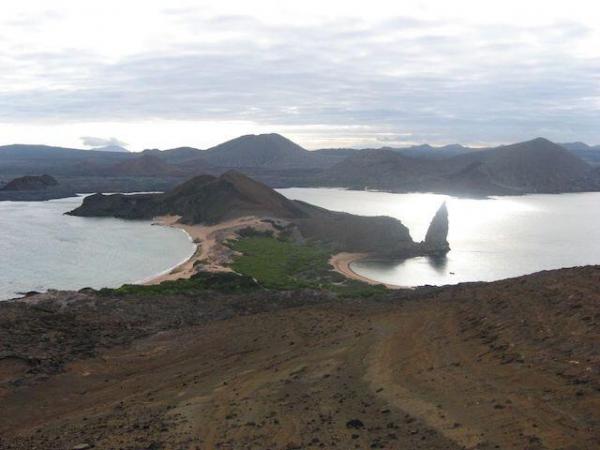
Yellow beaches. The Galapagos Islands are remants of volcanos that
rose out of the Pacific over a period of time. The color of the
beaches depends on the mineral content of the original volcanic
material. We saw yellow, white, red, and black beaches.
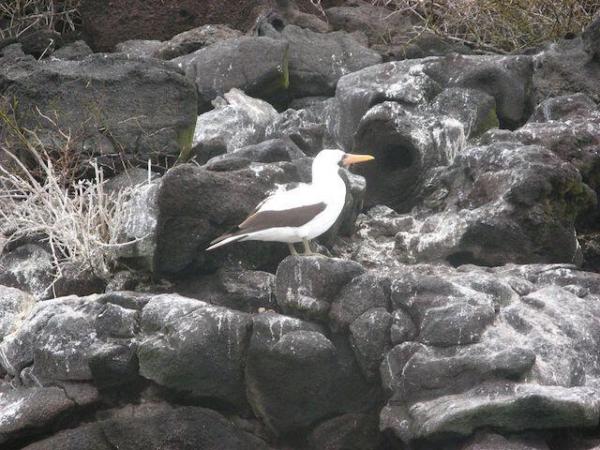
A third variety of Booby, the Nazca Booby.
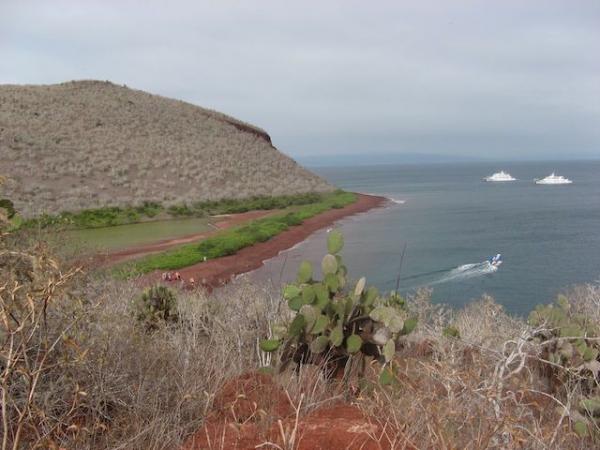
Red beach.
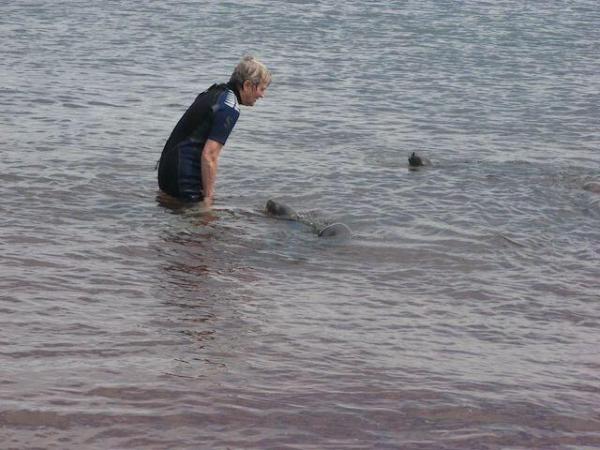
Here Ginger is returning from a snorkeling outing, and the Sea Lions
are checking her out in the shallow water of the shore. In deeper
water, she watched a large shark swim by her. A guide said, if you do
not want to see a shark, close your eyes.
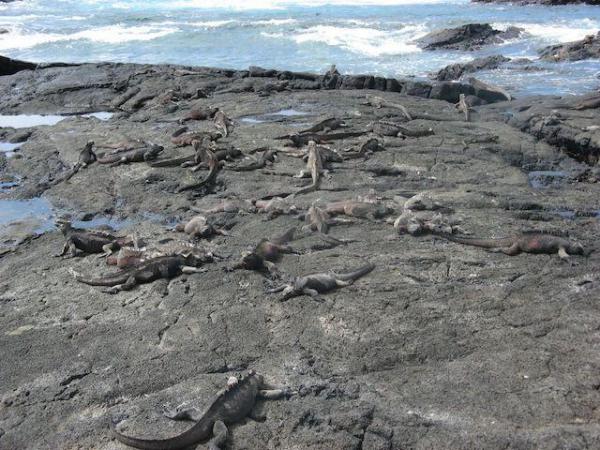
Marine Iguanas warming themselves on the lava. Although soil has built
up over time in some places, there is a lot of exposed lava.
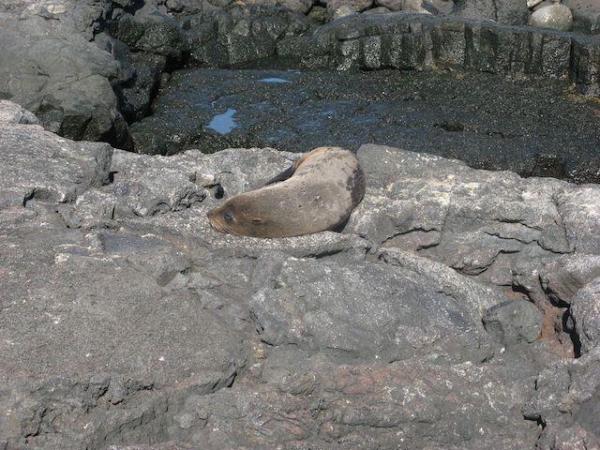
This is another species of Sea Lion that is called a Fur Seal. Many
thousands were killed for their pelts.
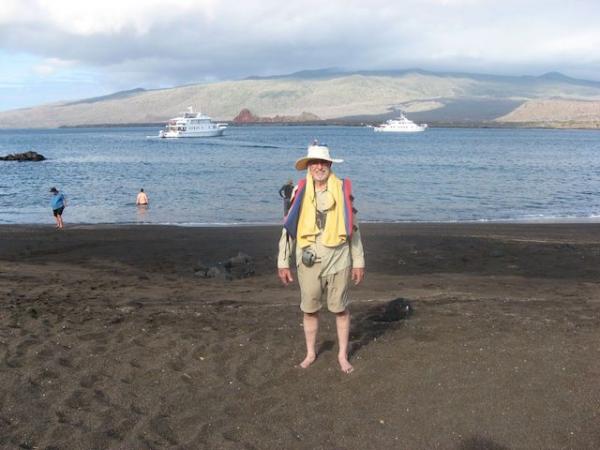
Black beach. Fully loaded tourist (Jim) in life jacket and gear,
getting ready to board a Zodiac back to the ship.
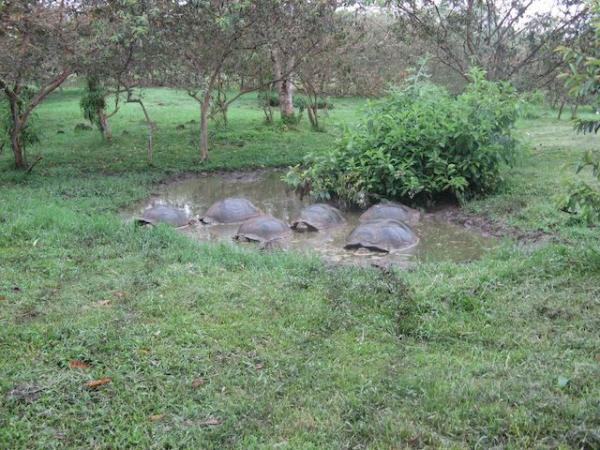
On our last day we were taken to view the Giant Tortoises in their
natural habitat. They love the mud, as it helps to control parasites
on their skin.
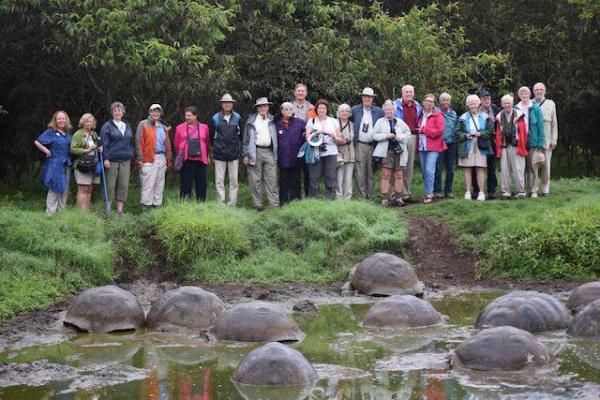
Our group around a pond full of giant tortoises. This photo is
courtesy of Professor Rachel Merz, a Swarthmore College marine
biologist (standing far left), who made the trip with us. We're on the
far right. Rachel gave two great lectures onboard. She topped
herself, however, with a fantastic slide show of underwater photos
that she took on the trip while snorkeling.
